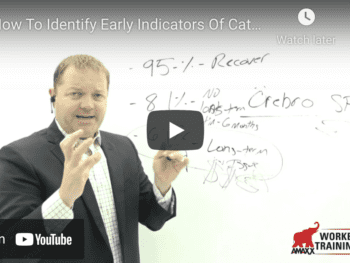Three Easy Elephant Bites
To use one of our favorite quotes: “You can’t eat elephant in one bite.” So, let’s look at WC cost myths and realities in three easy elephant bites.
In the field of workers’ compensation costs containment, and as anyone who reads our WCK Blog knows, cost containment is the theme throughout, there are nine popular myths about cost containment. And, there are nine realities designed to refute these myths.
Let’s List the Myths:
MYTH #1: There’s nothing you can do to control workers’ compensation costs.
MYTH #2: You should begin by reducing the cost of your medical providers.
MYTH #3: Employees stay out of work intentionally because they don’t want to go back to work.
MYTH #4: Once implemented your workers’ compensation premiums will immediately go down.
MYTH #5: High workers’ compensation costs are caused by aggressive plaintiff’s attorneys and laws favoring employees.
MYTH #6: Workers’ compensation cost containment programs are a “quick fix” to the high costs of workers’ compensation.
MYTH #7: If you have unions, you’ll never lower your workers compensation costs.
MYTH #8: To get a slow claim “moving,” the best thing to do is request an IME (Independent Medical Evaluation).
MYTH #9: The best way to reduce workers’ compensation costs is to change insurance companies or third-party administrators (TPAs).
Looking carefully we see these myths are negative and naïve. Nothing productive happens in business by assuming everything is “awful,” it can be “fixed” quickly, and people (i.e., employees, unions, insurance companies) are out to “get” you.
What Are THE Realities?
#1. There’s nothing you can do to control workers’ compensation costs.
REALITY: There are tried and true methods to reduce costs.
Management must begin with a “CAN DO” attitude, thinking outside the box, developing creative ideas to bring employees back to work more rapidly. Returning employees to work as soon as they are medically able to perform any type of transitional duty job within the workplace is a key to overall cost reduction.
Include your broker, your insurance account executive, the TPA claims manager, a medical advisor, for brainstorming meeting. The facilitator uses flip charts and asks thought provoking questions. Show how much it costs to pay for one workers’ compensation claim and the annual cost of workers’ compensation at each company. Use the Real Cost Calculator at http://www.WorkersCompKit.com/ as a tool for team members to gather this information. It’s a real eye-opener.
#2: You should begin by reducing the cost of your medical providers.
REALITY: Not! First, bring your employees sitting home on workers’ compensation back to work before you focus on medical cost containment, even though reducing medical providers’ fees is a noteworthy cause.
If you can reduce the number of “lost days” and bring employees back to a transitional duty position, a giant step is taken toward controlling your comp costs, because for each day your employees are out of work, you pay more in indemnity payments.
Half the cost of WC is lost wages. Indemnity payments are tax-free payments made to your employees to replace the wages they lose while they are out of work. The sooner employees go back to work, the more money you will save.
While it is true some employees will only be partially productive during the transitional duty period, it’s better to have them at work being partially productive than losing all productivity by sitting home. Also, the longer someone remains out of the workplace, the less likely it is that they will ever return to your workforce and the more likely it is they will suffer some level of clinical depression. As your lost day count goes down, so will all of the costs — including medical costs — associated with workers’ compensation. Often employees seeking to stay out of work use a doctor as a tool and seek treatment continuously in order to accomplish their objective of staying out of work longer.
NEXT: Realities #4, #5, & #6
Author: Rebecca Shafer, J.D. works with mid-market and national accounts focusing on project management, risk management assessments, data review, benchmarking, and development of Workers’ Compensation and Injury Management Programs. Projects focus on development of training and education programs, document design, evaluation and integration of insurance claims administration and TPA services. Contact her are: RShafer@ReduceYourWorkersComp.com.
We are accepting short articles* (200-600 words) on WC cost containment. Contact us at: Info@WorkersCompKit.com. *Non-compensable.
WC 101: www.ReduceYourWorkersComp.com/workers_comp.php
Do not use this information without independent verification. All state laws vary. You should consult with your insurance broker about workers’ comp issues.
©2008 Amaxx Risk Solutions, Inc. All rights reserved under International Copyright Law. If you would like permission to reprint this material, contact Info@WorkersCompKit.com















